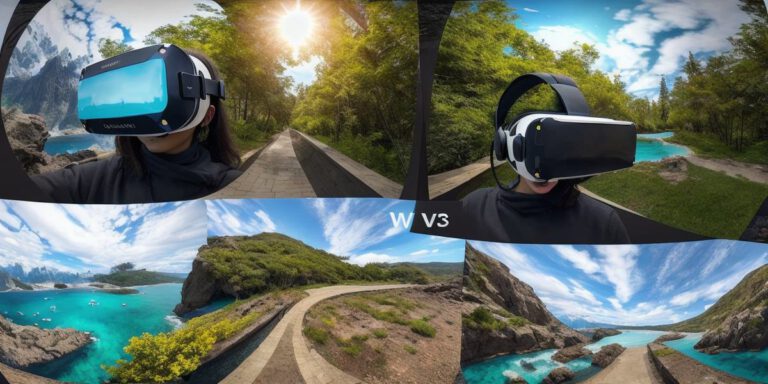What is VR in UX Design: Benefits, Examples, Best Practices

Virtual reality (VR) has revolutionized the way we experience and interact with digital content. It provides a fully immersive experience that allows users to feel like they are physically present in a virtual environment. In recent years, VR has gained popularity in UX design as a tool for creating more engaging and interactive user experiences.
Benefits of Using VR in UX Design
Improved engagement
VR offers an immersive experience that can capture users’ attention and keep them engaged for longer periods. By simulating a real-world environment, VR can provide a more realistic and authentic user experience, which can lead to higher levels of engagement and retention.
Enhanced creativity
VR provides designers with a new set of tools and techniques for creating unique and innovative designs. With the ability to design in 3D, designers can create more visually stunning and immersive experiences that stand out from traditional UX designs.
Increased accessibility
VR technology has come a long way, and it is now possible to create accessible VR experiences for users with disabilities. For example, VR can be used to help people with mobility impairments navigate complex environments or to provide visual assistance to individuals with color blindness.
Examples of VR in UX Design
Gaming and entertainment
VR has been widely adopted in the gaming industry as a way to create more immersive and interactive games. For example, VR headsets such as the Oculus Quest and HTC Vive are used by gamers to experience games in a fully immersive 3D environment.
Training and simulation
VR is also being used for training and simulation purposes. For example, the military has been using VR technology to simulate real-world combat scenarios, allowing soldiers to train in a safe and controlled environment.
Real estate and architecture

VR can be used to create virtual tours of properties or buildings, allowing users to explore and visualize spaces before making a decision. For example, architects can use VR to create virtual models of their designs and allow clients to experience them in a fully immersive environment.
Best Practices for Using VR in UX Design
Keep it simple
While VR can provide an immersive experience, it is important to keep the overall design simple and easy to navigate. Users should be able to find what they are looking for quickly and easily, even in a complex virtual environment.
Test and iterate
As with any new technology, it is important to test and iterate on VR designs to ensure that they are effective and engaging. This involves collecting user feedback and making changes based on their input.
Consider accessibility
When designing for VR, it is important to consider the needs of users with disabilities. For example, designers should ensure that virtual environments are accessible to individuals with mobility impairments and provide visual assistance to those with color blindness.
Conclusion
Virtual reality has become an essential tool in UX design, offering a new set of possibilities for creating more engaging and immersive user experiences. By considering the benefits, examples, and best practices for using VR in UX design, designers can create innovative and effective virtual environments that enhance user engagement and satisfaction.








